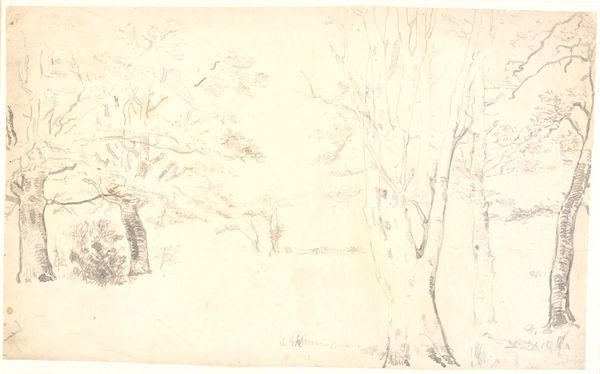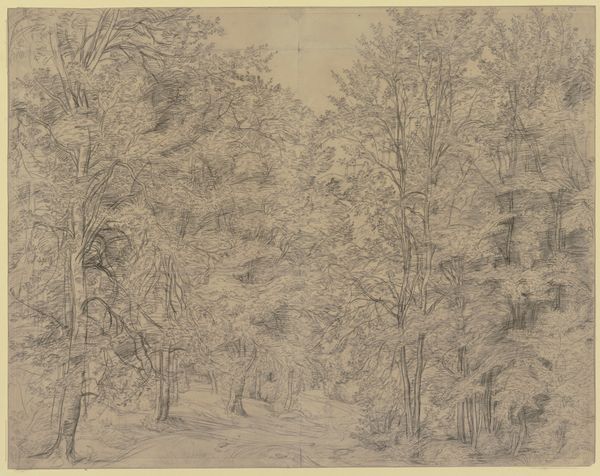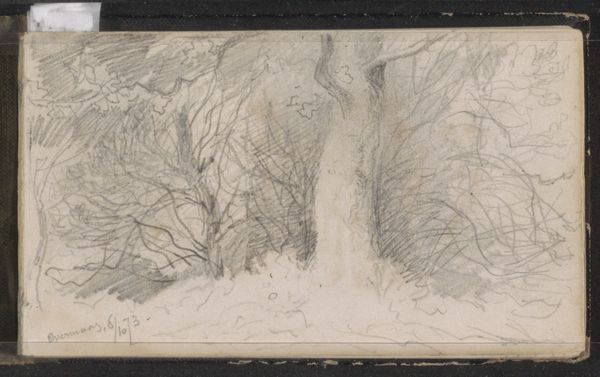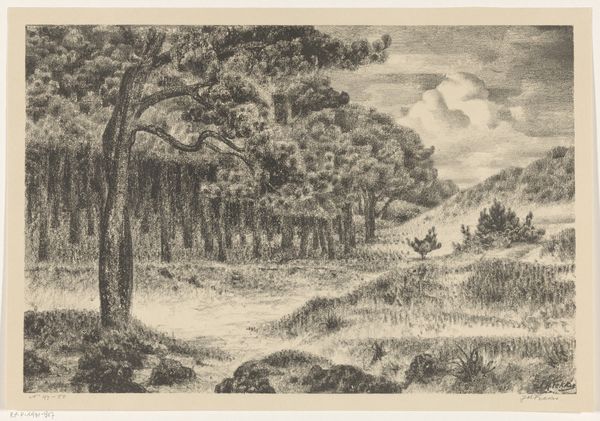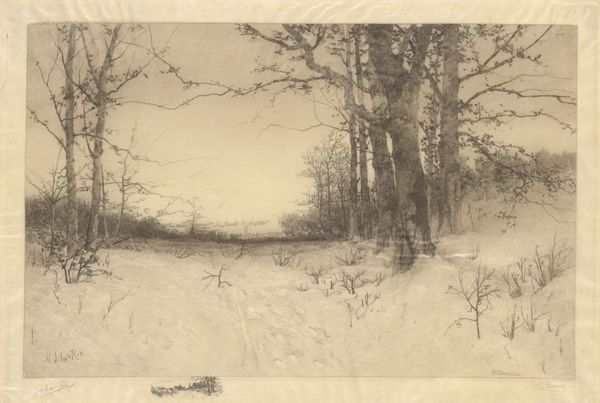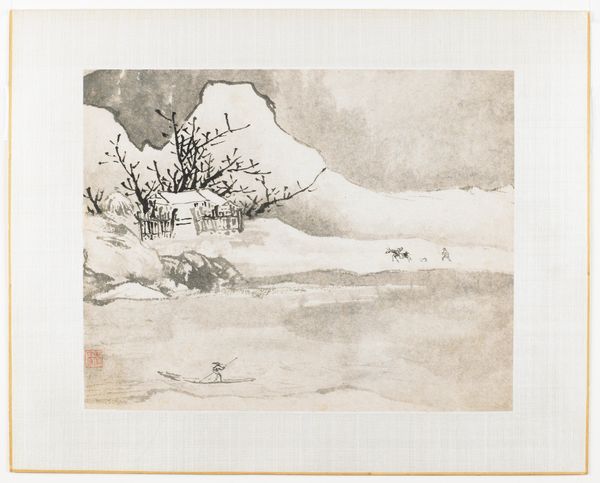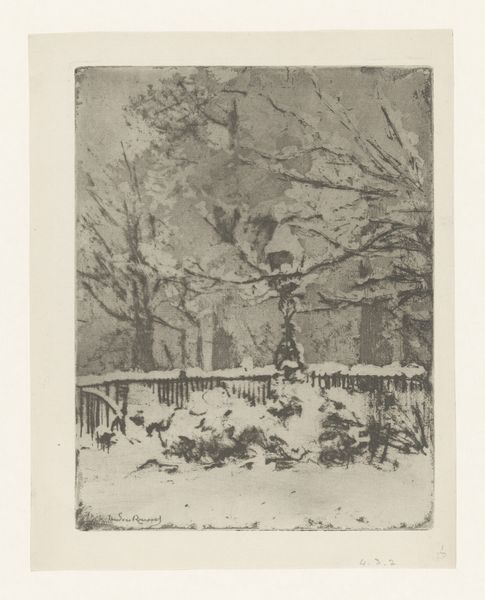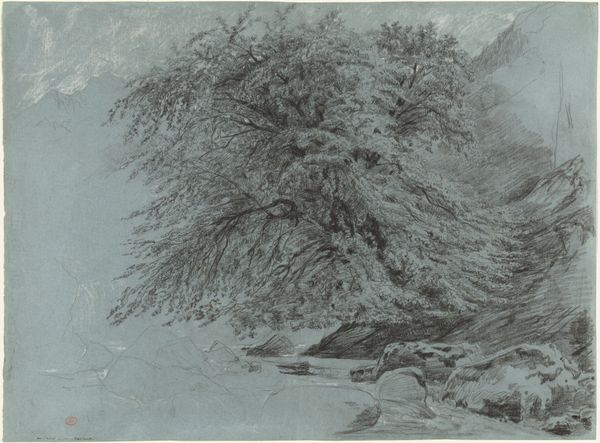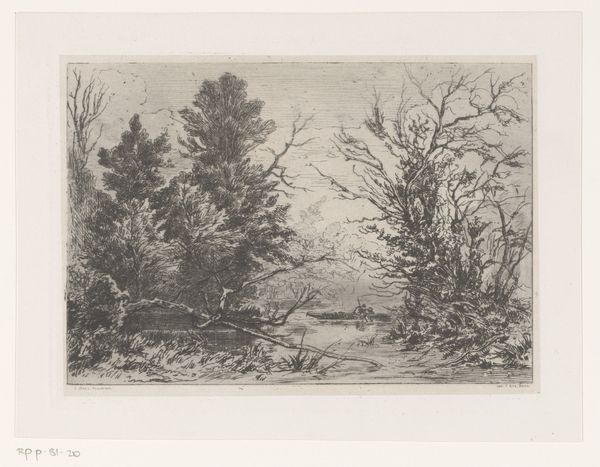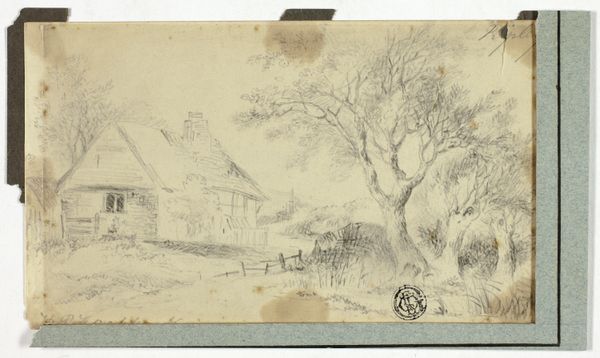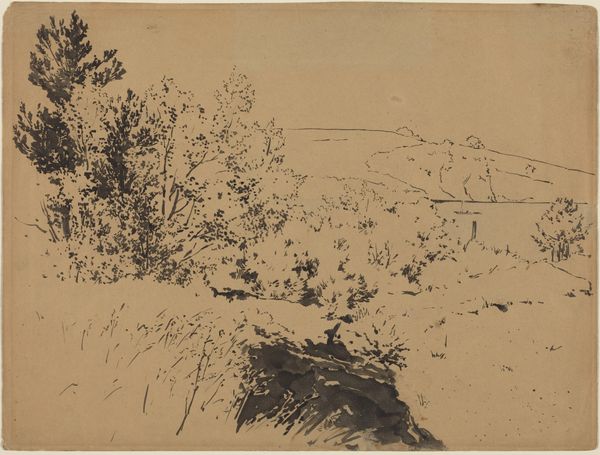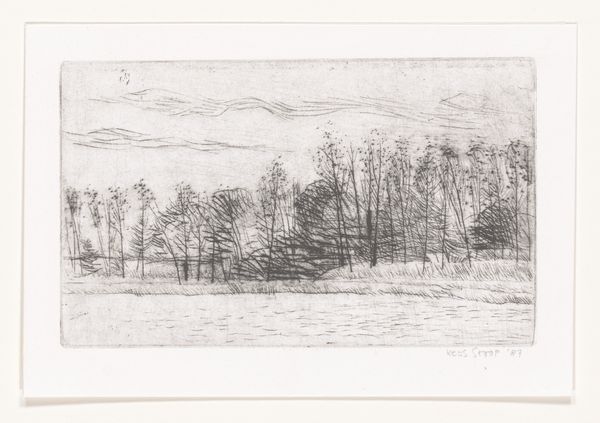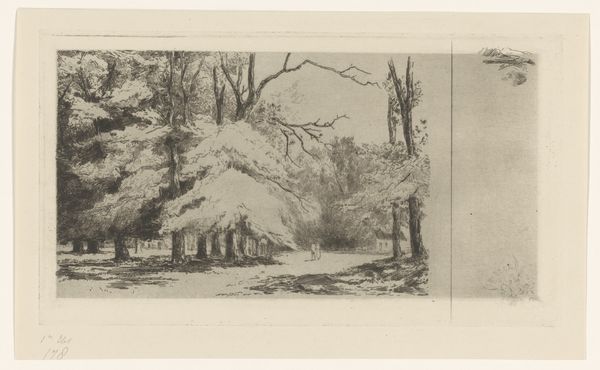
Dimensions: height 187 mm, width 236 mm
Copyright: Rijks Museum: Open Domain
Editor: So, here we have Charles Verlat's "Sneeuwlandschap met kasteel," a snowy landscape with a castle, made sometime between 1834 and 1890, rendered in etching, drawing and pencil. It feels so serene, yet the starkness of the trees creates a somewhat unsettling feeling. What do you see in this piece? Curator: It’s a compelling work! Beyond the obvious Romantic aesthetics and Realist depictions, it brings to mind questions of power structures subtly embedded within landscape art of that era. Notice the placement of the castle – elevated, dominating the horizon. Editor: I do now. The castle *is* looming there. Curator: How does the landscape itself, seemingly untamed, function in relation to the symbols of established power? Think about the socio-political climate in Europe during that time – rising industrialism, shifting class dynamics… Does the artist critique, or perhaps inadvertently, reinforce those power dynamics? Consider whose perspective is privileged. Is it the peasantry, rooted in nature, or the aristocratic, enshrined in stone? Editor: I never considered landscape art as something that could reinforce or challenge power. Is the fact that it's winter important? Does that affect your interpretation? Curator: Absolutely. Winter often symbolizes a period of hardship, scarcity. Perhaps there’s commentary here on the vulnerability of those living in proximity to wealth and power. It begs the question: Who benefits, and who is left in the cold? The visual language here can unveil subtle biases. Editor: This has really opened my eyes to interpreting landscapes through a different lens, considering not just aesthetics, but the underlying power dynamics they might represent. Curator: Indeed. And perhaps, even provoke us to question such dynamics in our contemporary contexts.
Comments
No comments
Be the first to comment and join the conversation on the ultimate creative platform.
